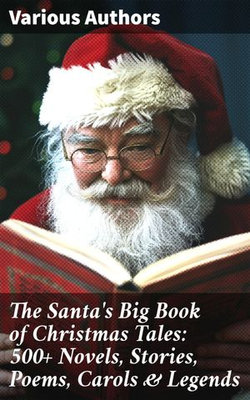The Santa's Big Book of Christmas Tales: 500+ Novels, Stories, Poems, Carols & Legends offers readers an enchanting voyage through the myriad themes associated with the timeless celebration of Christmas. From Dickensian towns shrouded in snow to the whimsical adventures conjured by Stevenson, this anthology traverses a landscape rich in literary styles and historical contexts. This collection captures not only the festive joy of carols but also tender reflections in poetry and compelling narratives from various traditions. Spanning centuries and genres, each tale, poem, and legend contributes to a vast tapestry, where the heartwarming spirit of the season unfolds. Within this anthology, an illustrious assembly of authors and poets unite to breathe life into the traditions and stories that have become Christmas mainstays. With the lyrical elegance of Wordsworth and the evocative imagery of Yeats, the collection delves into the cultural bedrock upon which Christmas myths and festivities are built. Whether through Yeats' nods to folklore or Alcott's celebration of familial warmth, each contribution sheds light on the period milieu'ÄîVictorian, Edwardian, and beyond'Äîthat shaped these authors' worlds, offering a cross-section of literary prowess and thematic resonance. Readers are invited to engage with this collection not merely as holiday entertainment, but as a profound exploration of human spirit and cultural heritage. The anthology opens doors to diverse perspectives and invites dialogues between historic voices, prompting introspection and delight. As a repository of knowledge and festivity, The Santa's Big Book of Christmas Tales stands as a testament to the storytelling prowess of its contributors, promising an enriching journey through narratives that celebrate unity and tradition.




Share This eBook: